Discover 11 hidden attractions, cool sights, and unusual things to do in Menorca (Spain). Don't miss out on these must-see attractions: El Toro, Cap d’Artrutx Lighthouse, and Torre d'en Galmés. Also, be sure to include Castle of Santa Àgueda in your itinerary.
Below, you can find the list of the most amazing places you should visit in Menorca (Balearic Islands).
Table of Contents
El Toro
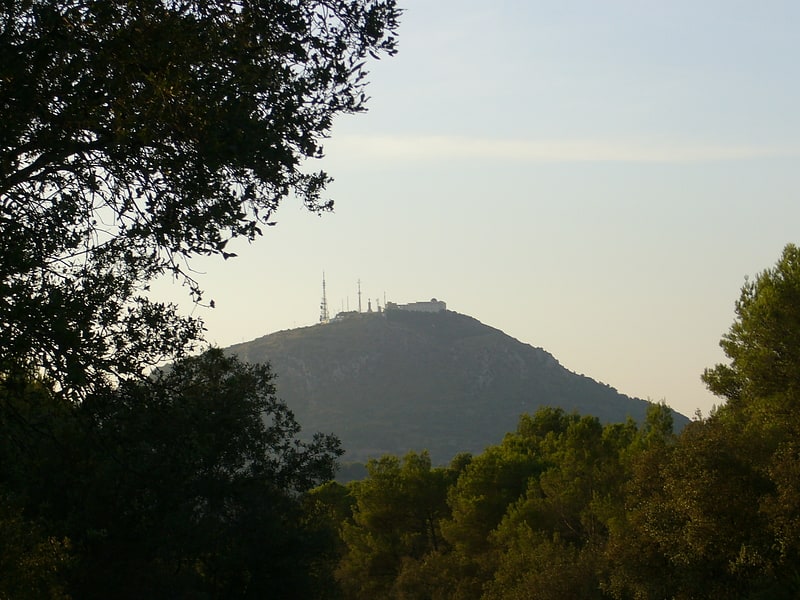
Also known as: Monte Toro
Tall mountaintop with 360-degree views. El Toro in Catalan, sometimes known by its Spanish name of Monte Toro, is the tallest hill of the island of Menorca, rising to an elevation of 358 m above mean sea level. The mountain is home to the Sanctuary of the Verge del Toro. The mountain's summit can be reached by automobile or on foot, from which there is a fantastic view of the nearby areas of the island.
El Toro is designated as an ANEI (protected natural area).[1]
Address: El Toro, 07740 Mercadal
Cap d’Artrutx Lighthouse
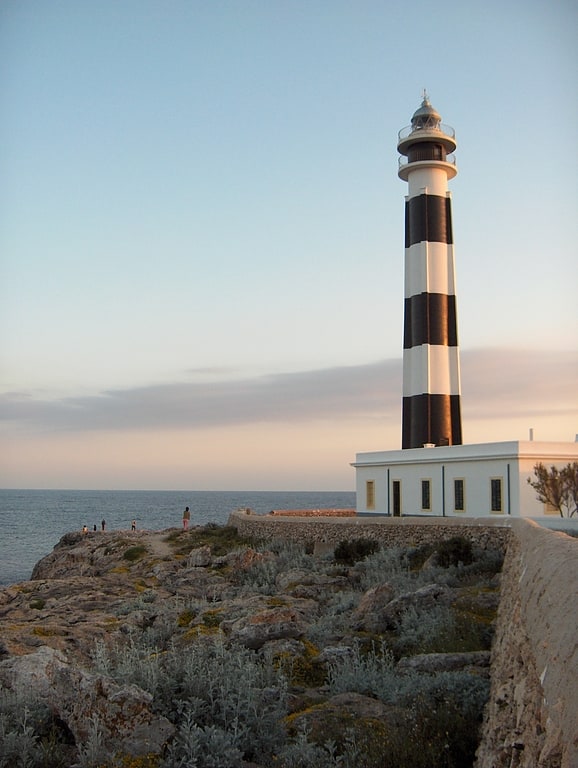
Also known as: Faro de Artrutx
Lighthouse in Spain. The Cap d'Artrutx Lighthouse or Artrutx Lighthouse is an active 19th century lighthouse located on the low-lying headland of the same name on the Spanish island of Menorca. It was completed in 1859 but the tower was significantly increased in height in 1969. Automated in 1980, the keeper's accommodation is now used as a restaurant.[2]
Torre d'en Galmés
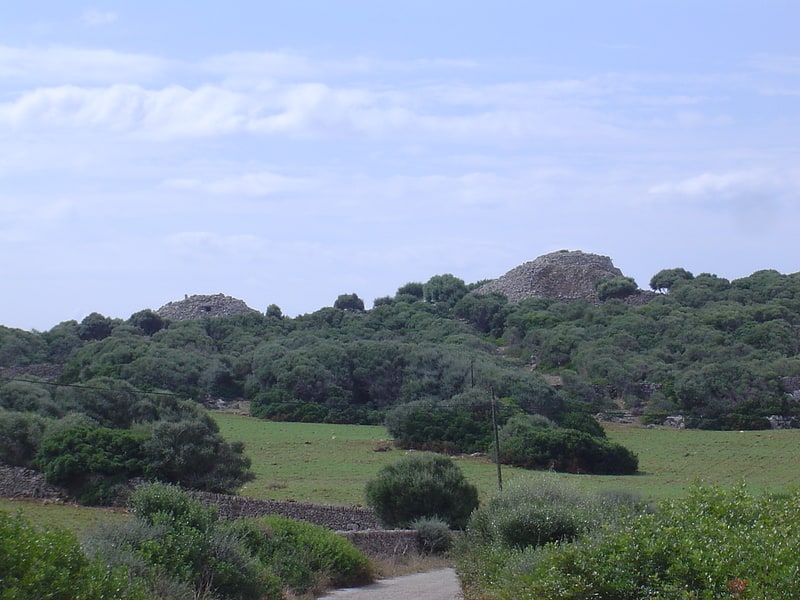
Ruins of a prehistoric village. Torre d'en Galmés is a Talayotic site on the island of Menorca, between Alaior and Son Bou, Menorca. The town developed from the start of the Talayotic era and expanded until the end of the Roman occupation, after which it was abandoned. Buildings were reoccupied and adapted by Muslim refugees from the Reconquista until the end of the Muslim occupation of the island.[3]
Castle of Santa Àgueda
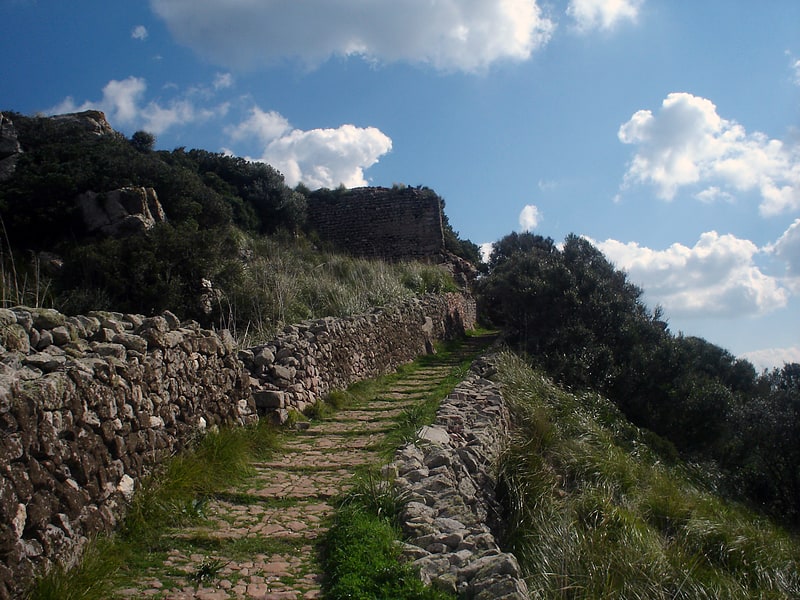
Also known as: Castillo de Santa Águeda
Museum in Spain. The Castle of Santa Àgueda, is found in the municipality of Ferreries, Menorca. It is situated over an elongated plateau, called Santa Àgueda, 264 m above sea level. It is the third highest point in the island behind Monte Toro and S'Enclusa. The castle is accessed by an ancient Roman road. Next to the castle there was also, until recently, a chapel dedicated to Saint Agatha.[4]
Address: Cami Santa Agueda, 07750 Ferreries
Cala en Bosch
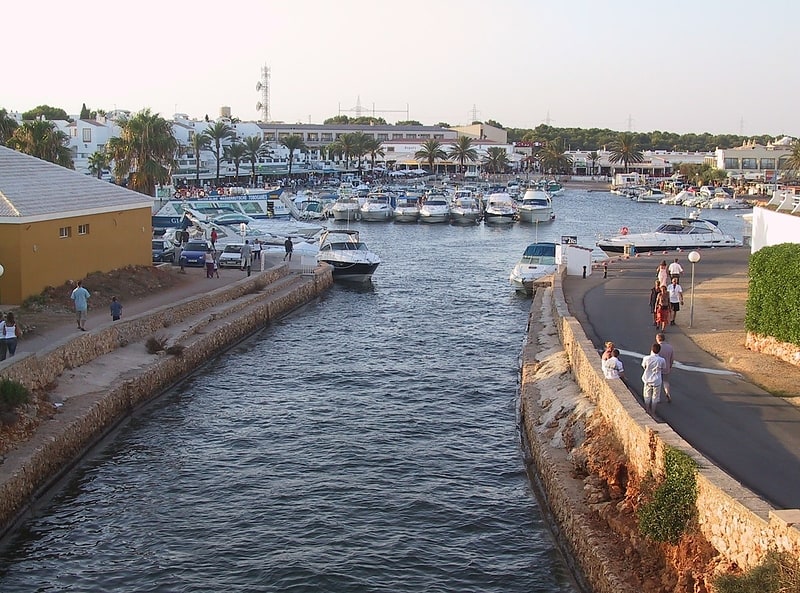
Apartment. Cala en Bosch, also Cala'n Bosch or Cala en Bosc, is a beach, marina, hotel, and apartment resort on the southwest coast of Menorca, Balearic Islands, Spain, about 9 kilometres south of Ciutadella de Menorca. It is bordered by Son Xoriguer to the east and Cap d'Artrutx, the southwestern point of the island to the west which contains the Lighthouse of Artrutx. There are scuba diving facilities in the area. Cala en Bosch is described as being "edged by a shoreline of jagged rocks, several coves, and an inlet to a marina in an artificial lake."
Tourism, especially from the British, took off at Cala en Bosch in the 1980s with a dramatic growth of timeshare and self-catering apartments in the area. The town consists almost entirely of apartments and hotels; the main centre of activity is in the main town of Ciutadella to the north.[5]
Address: Via de Circumval·lació, 07760 Cala en Bosch
Cala Morell Settlement
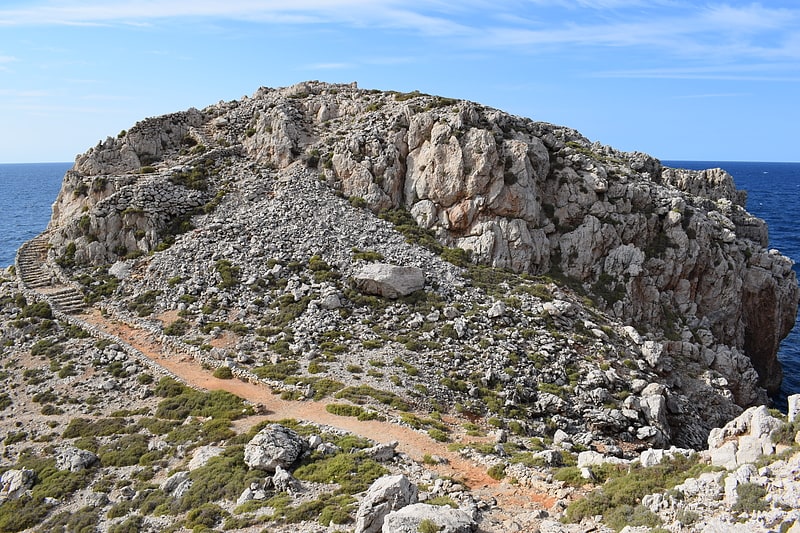
Also known as: Poblado de Cala Morell
The settlement of Cala Morell is a Menorcan pretalayotic archaeological site which is located in Ciutadella de Menorca. It is situated on a 35-meter-high coastal headland which closes the northeast side of Cala Morell's bay. This promontory is protected by a dry-stone wall, which is found in the area where the promontory connects to solid ground. It shares many features with another site which is located some kilometers away from it: Es Castellet des Pop Mosquer.
It is one of the 32 Menorcan prehistoric sites that compose the series for the Talayotic Menorca nomination to become World Heritage by UNESCO.[6]
Taula
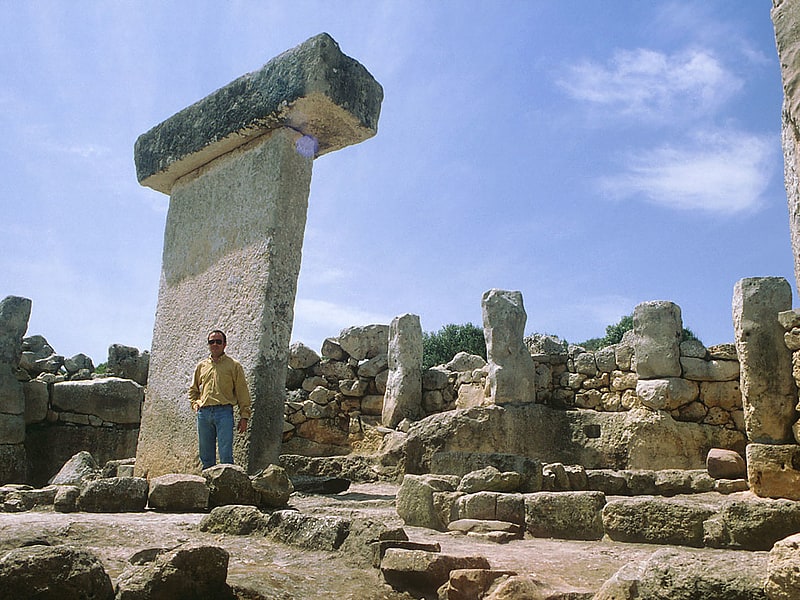
A taula is a Stonehenge-esque stone monument found on the Balearic island of Menorca. Taulas can be up to 5 metres high and consist of a vertical pillar with a horizontal stone lying on it. A U-shaped wall often encloses the structure.
They were built by the Talaiotic culture between 500 BC and 300 BC.
Their exact cultural meaning remains unknown, but they probably had religious and/or astronomical purposes. Most of the taulas face south, which seems to suggest some astronomical meaning. Archeologist Michael Hoskin has suggested the taulas may have been part of an ancient healing cult. They are frequently found near talaiots.
The first author who wrote about these structures was Juan Ramis in his book Antigüedades célticas de la isla de Menorca ("Celtic Antiquities of the Island of Menorca"), which was published 1818, being the first book in the Spanish language entirely devoted to Prehistory.
Examples include those at Torre Trencada, Talatí de Dalt, Torrellissá Nou, Trepucó, and the site at Torralba d'en Salord.[7]
Binissafullet

Binissafullet is a talayotic settlement which was occupied from the 10th century BC and had its height during the 4th and 3rd centuries BC. Medieval Islamic materials scattered around the site's surface suggest a later occupation during the Medieval period.
Binissafullet has several elements which are usually found in talayotic settlements: a talayot, a taula enclosure, a hypostyle hall, dwellings, silos...
In 1988 the site was deforested, whereas in 1990 its taula enclosure was excavated and restored. The taula, the main element inside the enclosure, was found on the ground during the excavations and later restored by replacing it in its upright position.
Binissafullet's taula is unique due to its small dimensions and the small breadth of its vertical or supporting stone. Moreover, it is the only taula on Menorca that has been erected after having been found on the ground. The other six taulas which still stand in their upright positions have withstood the passing of time since Prehistory.
Excavations conducted in the taula enclosure gave a lot of information about its use and the activities carried out inside. Fragments of Punic amphorae and faunal remains, mostly from sheep and goats, as well as remains of a hearth, indicate that ritual activities were probably performed in this building, where the consumption of wine and meat was important. All the artifacts and other remains located in these excavations are currently kept in the Museum of Menorca (Museu de Menorca).
It is one of 32 sites that form part of the nomination series of Talayotic Minorca to become a World Heritage site by UNESCO.[8]
Biniai Nou hypogea
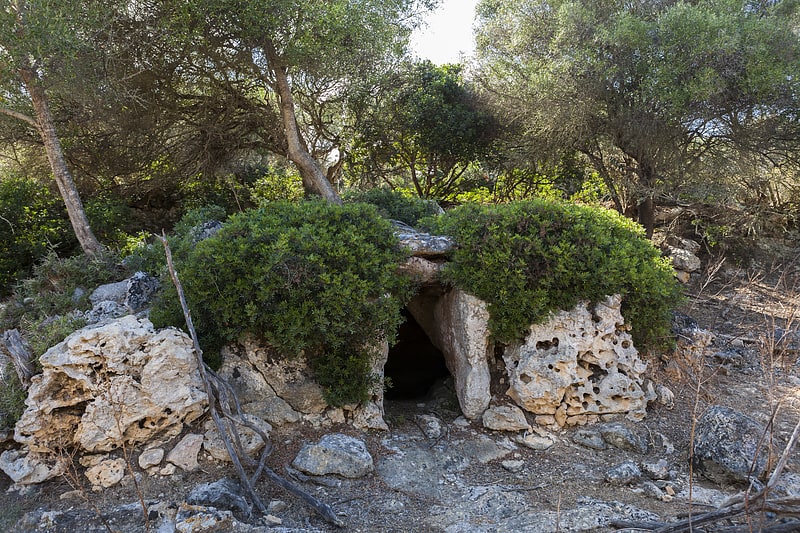
Also known as: Hipogeos de Biniai Nou
There are two funerary hypogea in Biniai Nou, which were built in the Chalcolithic period. These hypogea have their chamber excavated into the rock, whereas the access or corridor was built with vertical stone slabs, which form a megalithic façade.
These two tombs were excavated several years ago by an archaeological team sponsored by the Museum of Menorca. These tasks shed light into their chronology and let the team recover objects that formed part of the grave goods that accompanied the dead: ceramic vessels, awls, radiolarite fragments (a type of rock that was used to make tools).
The tombs date from the Chalcolithic or Bronze Age. The importance of the Biniai Nou site lies on the fact that one of the human bones located in one of the hypogea was C14 dated and offered the oldest dating available in Menorca’s Prehistory (2290-2030 BC).[9]
Fortaleza de Isabel II
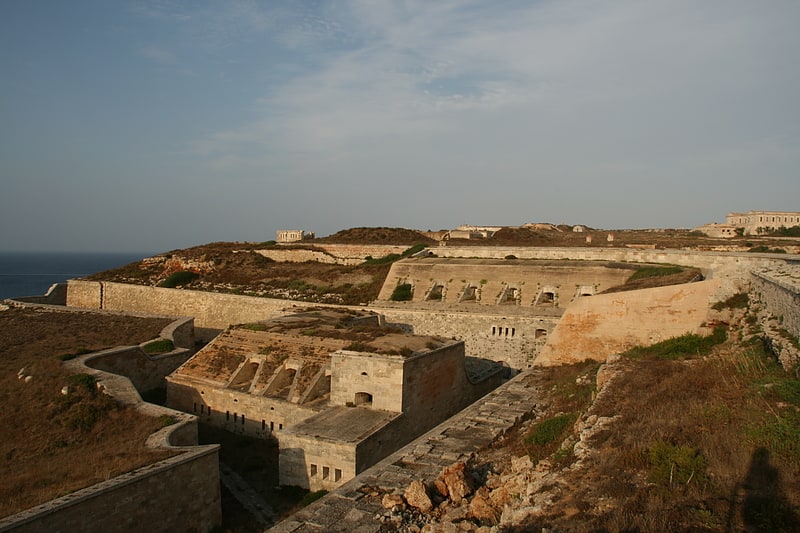
The fortress of Isabel II or fortress of La Mola is a Spanish military complex located on the peninsula of La Mola, at the entrance to the port of Mahón, island of Menorca, opposite the castle of San Felipe, which protects the entrance to the port from the other side of the mouth. Next to this fortress is the easternmost point of Spain.
It is named after Queen Elizabeth II, who had it built in the middle of the 19th century.
Trepuco
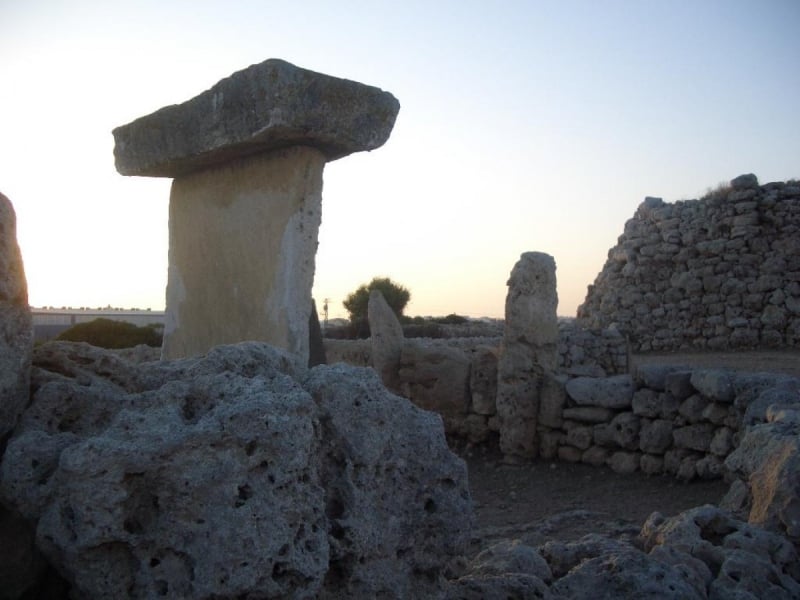
Ruins, Museum